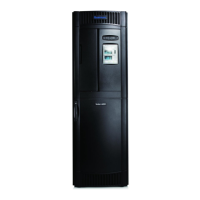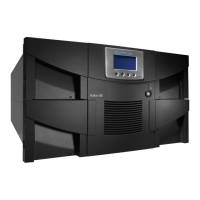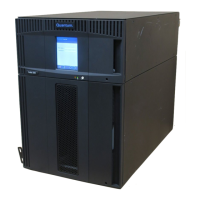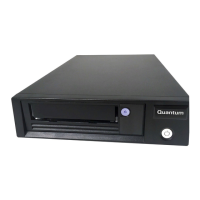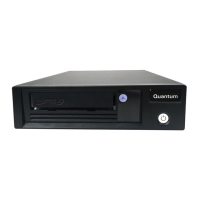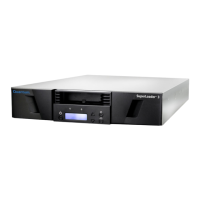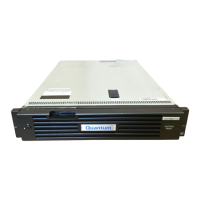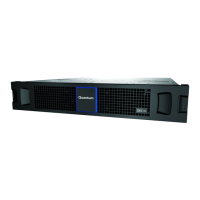Chapter 8: Encryption Key Management
Setting up EKM on the Scalar i6000
Quantum Scalar i6000 User’s Guide 305
e Secondary port number - Field is disabled, and port number
defaults to 6000 automatically.
f Key Class - This field is not applicable for SKM.
g EKM Path Diagnostics - To test the configuration, click Tes t.
The Path Diagnostic Results dialog box appears. For more
information on EKM Path Diagnostics, see
Using EKM Path
Diagnostics on page 311.
KMIP Key Manager
Note: KMIP Key Manager requires at least two (2) servers and can
have up to ten (10) servers for increased failover capacity.
Assign your key servers on this screen in the order in which
you want failover to occur.
For an initial key request, the library tries server #1 (the
primary server) first. If server #1 is not available to perform
a key request, the library tries server #2. If server #2 is not
available, the library will try server #3, and so on, in order.
Once the library identifies a server that can perform the
request, this server remains the active server until it fails a
key request or the library is rebooted. At that point, the
library starts over and uses server #1 for key requests.
aEnable SSL - Check box is checked automatically and the field is
disabled.
bServer 1 - Type the IP address or DNS name of the primary KMIP
key manager server.
c Port for Server 1 - Type the applicable port number. The port
number must match the configured port number on the
primary KMIP key manager server. A typical port number used
for communication between the KMIP key manager server and
the library is port 9003.
dServer 2 - Type the IP address or DNS name of the secondary
KMIP key manager server.
e Port for Server 2 - Type the applicable port number. The port
number must match the configured port number on the
secondary KMIP key manager server. A typical port number used
